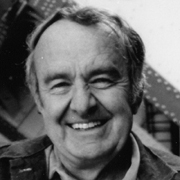Allan Sandage facts for kids
Quick facts for kids
Allan Sandage
|
|
|---|---|
 |
|
| Born | June 18, 1926 |
| Died | November 13, 2010 (aged 84) |
| Nationality | United States |
| Alma mater | California Institute of Technology University of Illinois |
| Known for | Physical cosmology |
| Awards | Helen B. Warner Prize for Astronomy (1957) Eddington Medal (1963) Rittenhouse Medal (1968) National Medal of Science (1970) Elliott Cresson Medal (1973) Bruce Medal (1975) Crafoord Prize (1991) Fellow of the Royal Society |
| Scientific career | |
| Fields | astronomy |
| Institutions | Carnegie Observatories |
| Doctoral advisor | Walter Baade |
| Influences | Walter Baade Edwin Hubble |
Allan Rex Sandage (born June 18, 1926 – died November 13, 2010) was an important American astronomer. He worked at the Carnegie Observatories in Pasadena, California. Sandage helped us understand how fast the universe is expanding. He also made the first good guesses for the age of the universe.
Contents
Allan Sandage's Amazing Career
Allan Sandage was one of the most important astronomers of the 20th century. He was born in Iowa City, Iowa, United States. He finished college at the University of Illinois in 1948. Later, he earned his Ph.D. from the California Institute of Technology in 1953.
Working with Famous Astronomers
While studying, Sandage was a student assistant to the famous astronomer Edwin Hubble. After Hubble passed away in 1953, Sandage continued his important research. He also worked with Walter Baade, a German-born astronomer.
Discovering the Universe's Age
In 1952, Baade made a big discovery about Cepheid variable stars. These are special stars that astronomers use to measure distances in space. Baade found two different types of these stars in the Andromeda Galaxy. This discovery meant the universe was much older than people thought. Its estimated age doubled from 1.8 billion to 3.6 billion years!
Sandage then showed that some bright spots in galaxies, called H II regions, were not stars. They were much brighter than the brightest stars. This finding helped scientists understand distances even better. It also increased the calculated age of the universe again, to about 5.5 billion years.
Measuring the Universe's Expansion
In 1958, Sandage published a very good estimate for the Hubble constant. This number tells us how fast the universe is expanding. His estimate was 75 kilometers per second per megaparsec. This value is very close to what scientists believe today.
Sandage spent many years studying how far away galaxies are. He looked at everything from stars in our own Milky Way Galaxy to very distant galaxies. His work helped us understand the true size and age of the universe.
Studying Galaxies and Their Formation
Sandage also studied groups of very old stars called globular clusters. He used these clusters to learn more about the age of the universe. He also helped write a paper that described how our Milky Way Galaxy might have formed. It suggested that our galaxy started as a giant cloud of gas that slowly collapsed.
In 1961, Sandage wrote a paper about using big telescopes to understand different models of the universe. He suggested that astronomers should focus on finding two key numbers: the Hubble constant and the deceleration parameter. This paper guided how astronomers studied the universe for many years. He also created two important atlases of galaxies in 1961 and 1981. These atlases helped classify galaxies based on how they look.
Sandage also discovered powerful jets shooting out from the center of the Cigar Galaxy. These jets were caused by huge explosions. They have been happening for at least 1.5 million years!
Allan Sandage was a very busy researcher. He published over 500 scientific papers during his career. He continued to work actively at the Carnegie Observatories until he passed away.
Allan Sandage's Life
In 1959, Allan Sandage married Mary Connelley, who was also an astronomer. They had two sons, David and John. In 1983, Sandage became a Christian. He then started writing essays about how religion and science can fit together. Allan Sandage passed away on November 13, 2010, at his home in San Gabriel, California. He was 84 years old.
Honors and Awards
Allan Sandage received many awards for his important work in astronomy:
- Helen B. Warner Prize for Astronomy (1957)
- Eddington Medal (1963)
- Gold Medal of the Royal Astronomical Society (1967)
- National Medal of Science (1970)
- Henry Norris Russell Lectureship (1972)
- Elliott Cresson Medal (1973)
- Fellow of the Royal Society
- Bruce Medal (1975)
- Golden Plate Award of the American Academy of Achievement (1976)
- Crafoord Prize (1991)
- Gruber Prize in Cosmology (2000)
Named After Him
- A main-belt asteroid was named after him: 9963 Sandage. He also discovered one asteroid himself: (96155) 1973 HA on April 27, 1973.
See also
 In Spanish: Allan Rex Sandage para niños
In Spanish: Allan Rex Sandage para niños

